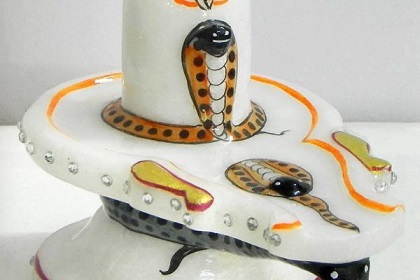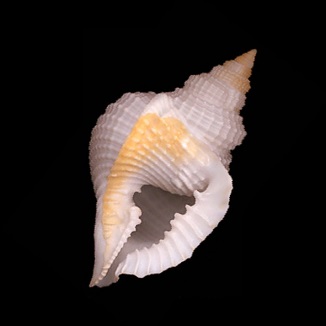4 India Mystical Symbols which have Almost Unbelievable Powers
There are many different symbols which are important in India. Symbols such as flowers, rivers, buildings and even sounds.
Symbols are an important part of the Indian culture. Birds are also symbolic in Indian culture. The peacock symbolizes love, it is sacred to Sarasvati who is the goddess of wisdom.
The owl for example symbolizes death. Here are four other symbols which are a part of the culture in India.

Saligram
Fossilized seashell stones are called saligrama, and serves as non-anthropomorphic symbol of Vishnu.
Small image is a closeup of Vishnu seated in the lotus position on a lotus. Shila, or Shaligram refers to a fossilized shell used in South Asia as an iconic symbol and reminder of the god Vishnu as the Universal Principle by some Hindus.Shaligrams are usually collected from river-beds or banks such as the Gandaki river in Nepal.
They are considered easy to carry and popular in certain traditions of Vaishnavism, as an aniconic representation of the divine.
Read more about the Shaligram mystical stone.
Siva Lingam
This Siva Limgam is called as Kubera Lingam, worshiped at Jambukesvara temple in Srirangam.
Narmedeshwar Shiva lingam
In traditional Indian society, the linga is seen as a symbol of the energy and potential of Shiva himself.
Shiva (literary. the auspicious one) is one of the principal deities of Hinduism. He is the supreme God within Shaivism, one of the three most influential denominations in contemporary Hinduism.
In Shaivism tradition, Shiva is the Supreme being who creates, protects and transforms the universe.
Read more about the Shiva lingam.
Dakshinavarti Shankh

Sri Lakshmi Consh.jpg Genuine Valampuri Lakshmi Conch Shell from Indian Ocean. Photo by Rickbrown9 / CC BY-SA 4.0
This is the shell of a large sea snail from the Indian Ocean (a shell of the species Turbinella pyrum), but one that has the very rare reverse-turning spiral.
Genuine Dakshinavarti Lakshmi Conches are only found in the Indian Ocean, between Myanmar (Burma) all the way to Sri Lanka.
Real Lakshmi Conch (right side spinning) are estimated to occur only one per 100,000 conch shells.
The Lakshmi Conch is said to bring material wealth and all manner of blessing, upon the owner. Ritual use may include bathing deities, drinking from the conch, or the use of mantras oriented to goddess Lakshmi.
It is a wonderful object for Vastu purpose giving high positive energy.
Read more about the Dakshinavarti Shankh.
Heera Shankh

Distorsioventricosa. Photo by Pet~commonswiki / CC BY-SA 3.0
Heera Shankh
Published to Youtube on Published on Nov 9, 2015
Heera shankh or Pahadi Shankh: This is a fossilized right side conch. The average life of it is 10000 years or more. These Shankh after millions of years became fossilized and were embedded with beautiful gems and diamond like colored stones.
The Heera Shankh are also very rare and are not easily available. The Heera Shankh like Dakshinavarta Shankh are right side Shankh and very similar to the properties of the Dakshinavarta Shankh.
The worshipper of Heera Shankh is blessed with immense fortune and luck….
Read more about Heera Shankh.
Read More
Psychic Readings to Help Your Luck in Non-conventional Ways
Mantras; The Tradition behind Them
Palm Reading – What is it and is it effective?
What is Numerology and what is it used for?
Moon Luck – Good Luck but Beware its Unlucky too …
Jade Lucky Stones – Mysticism and Jade Luck Abound





